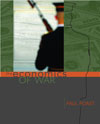
|  |
Feature Summary- Current data as well as historical perspective. Students will understand present day conflicts (Iraq and Persian Gulf Wars) relative to the two World Wars and the Vietnam War. In particular, each chapter includes “historical perspective” boxes that place the issues in historical context. With this feature, students could, for example, compare the economic impact of the Napoleonic Wars on Britain to that of the Peloponnesian Wars on Athens.
- Solid use of key micro and macro tools: using real economic tools yet in an easy-to-understand way, Poast is the perfect answer for instructors wishing to find interesting examples to illustrate key analytical tools to motivate learning. For example, suicide bombing and arms races are used to teach indifference curves, military contractors are applied to monopoly concepts, and peacekeeping operations illustrate the difference between public goods and common resources.
- Short and concise with extensive use of graphs and tables. This text makes the reading load less burdensome for students.
- Value Price and Easy Incorporation Into any Principles or Intermediate Course: because of the book’s low price, and several aids for incorporation such as a table in the Preface explaining which economic concepts are covered and where. Poast is an affordable and convenient package option with any other McGraw-Hill text.
- Fascinating data that does not appear in standard text material. Poast draws upon the latest scholarship in the field as well as data from seminal works in the past. A few examples include a chart that shows the Dow Jones Average on critical dates such as Pearl Harbor and 9/11/2001 next to the Average six months and one year later; costs of major wars as a percent of GDP; the estimated monetary value of the lives loss during major wars; and the expected black market price of nuclear fissile material. Students get to see economic principles applied in an interesting way.
- Review questions at the end of each chapter. These questions are designed to give students the opportunity for critical thinking.
|
|
|